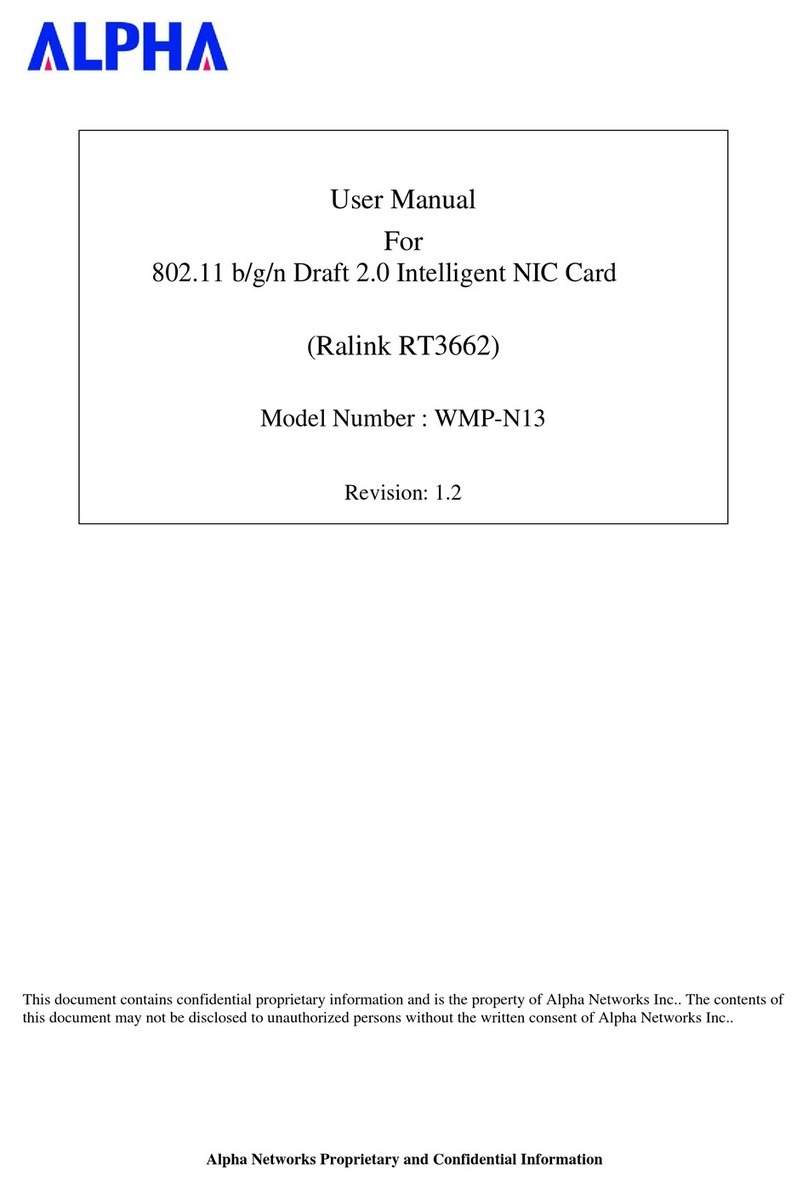
Alpha Networks Proprietary and Confidential Information
8
2.3 Software Requirements
The Configuration Software supports Microsoft Windows 98SE, ME, 2000, and XP. This configuration software
includes the following functions:
yInformation
Information allows you to monitor network status.
yConfiguration
Configuration allows you to configure parameters for wireless networking.
ySecurity
Supports enhanced security WEP, 802.1x,WPA.
2.3.1 Information
# Feature Detailed Description
2.3.1.1 General
Information
yGeneral Information shows the name of Wireless
Adapter,Adapter MAC Address, Regulatory Domain,
Firmware Version, and Utility Version.
2.3.1.2 Current Link
Information
yCurrent Link Information shows the Current Setting
ESSID, Channel Number, Associated BSSID, Network
Type (infrastructure or Ad-hoc network), WEP Status
(enable or disable), Link Status (Connect or Dis-
connect), 802.11g Transmit Speed (6, 9, 12, 18, 24, 36,
48, 54Mbps), 802.11b Transmit Speed (1, 2, 5.5,
11Mbps), Signal Strength, and Link Quality.
2.3.1.3 Site survey yTo search the neighboring access points and display the
information of all access points.
2.3.2 Configuration
# Feature Detailed Description
2.3.2.1 ESS ID yInput an SSID number if the roaming feature is enabled
ySupports for ASCII printable characters.
2.3.2.2 Network Type yAd-hoc Mode and 802.11 Ad-hoc Mode for network
configurations that do not have any access points
yInfrastructure Mode for network configurations with
access points
2.3.2.3 Power Save yExtend the battery life of clients by allowing the client
to sleep for short periods of time while the Access Point
buffers the messages.
2.3.2.4 RTS Threshold
ySet the number of bytes used for fragmentation
boundary for messages
2.3.2.5 Fragment
Threshold
ySet the number of bytes used for RTS/CTS boundary
2.3.2.6 Transmission Speed
yThis indicates the communication rates. Select
appropriate transmission speed to match your wireless
LAN settings
2.3.2.7 Roaming ySupport Automatic or Manual Rescan to associate with
access point.
2.3.3 Security
# Feature Detailed Description
2.3.3.1 Encryption yRC4 encryption algorithm
ySupport 64/128/152 bit WEP encryption
ySupport open system and shared key authentication





























